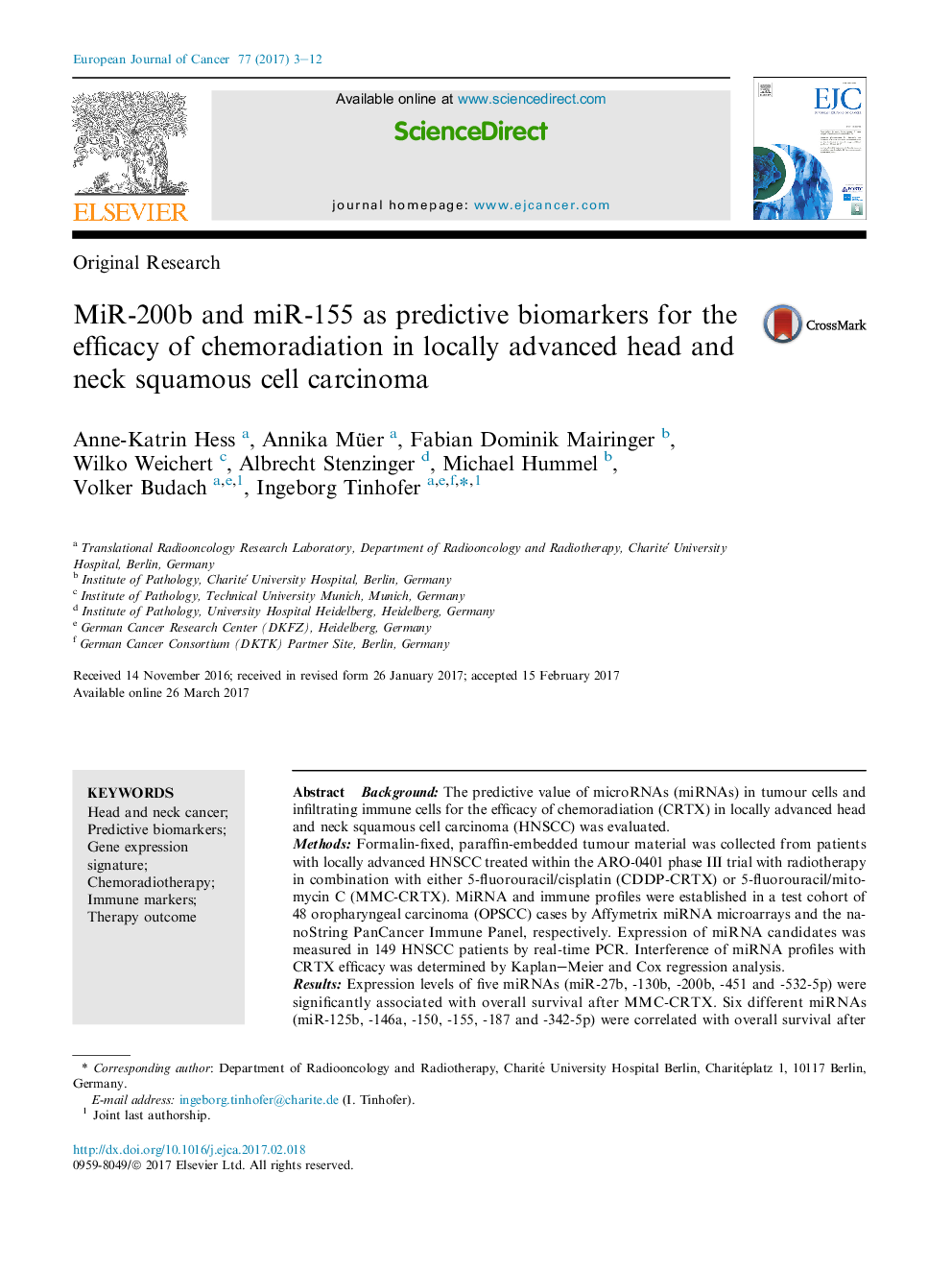| Article ID | Journal | Published Year | Pages | File Type |
|---|---|---|---|---|
| 5526619 | European Journal of Cancer | 2017 | 10 Pages |
â¢Assessment of miR-200b and miR-155 could allow selection of chemoradiation (CRTX) regimens in oropharyngeal carcinoma.â¢miR-200b was significantly associated with the risk of distant metastasis and survival after mitomycin-C-based CRTX.â¢miR-155 expression correlated with improved local control and survival after cisplatin-based CRTX.â¢miR-155/miR-146a expression levels were associated with tumour immune cell infiltration.
BackgroundThe predictive value of microRNAs (miRNAs) in tumour cells and infiltrating immune cells for the efficacy of chemoradiation (CRTX) in locally advanced head and neck squamous cell carcinoma (HNSCC) was evaluated.MethodsFormalin-fixed, paraffin-embedded tumour material was collected from patients with locally advanced HNSCC treated within the ARO-0401 phase III trial with radiotherapy in combination with either 5-fluorouracil/cisplatin (CDDP-CRTX) or 5-fluorouracil/mitomycin C (MMC-CRTX). MiRNA and immune profiles were established in a test cohort of 48 oropharyngeal carcinoma (OPSCC) cases by Affymetrix miRNA microarrays and the nanoString PanCancer Immune Panel, respectively. Expression of miRNA candidates was measured in 149 HNSCC patients by real-time PCR. Interference of miRNA profiles with CRTX efficacy was determined by Kaplan-Meier and Cox regression analysis.ResultsExpression levels of five miRNAs (miR-27b, -130b, -200b, -451 and -532-5p) were significantly associated with overall survival after MMC-CRTX. Six different miRNAs (miR-125b, -146a, -150, -155, -187 and -342-5p) were correlated with overall survival after CDDP-CRTX. Validation by real-time PCR confirmed the predictive value of miR-200b and miR-155 in OPSCC, which was absent in hypopharyngeal carcinomas. MiR-146a was revealed as a prognostic marker for both CRTX regimens. MiR-200b expression was mainly associated with distant metastasis, whereas miR-155 correlated with local recurrence. MiR-155 and miR-146a were identified as surrogate markers for tumour-infiltrating lymphocytes.ConclusionsMiR-200b and miR-155 were established as potential markers for personalised treatment selection of two standard regimens of CRTX. The predictive role of miR-155 deserves further investigation, especially within the framework of clinical trials of CRTX/immune checkpoint inhibitor combinations.
